NVIDIA nForce4 Ultra: Biostar's Performance Surprise
by Gary Key on February 16, 2006 12:05 AM EST- Posted in
- Motherboards
Audio Performance
The Realtek ALC-850 was tested with the recently released 3.82 driver set. The Realtek audio drivers do not support more than 25 3D buffers at this time, so the scores cannot be directly compared to the HDA Mystique 7.1 and Creative Labs Sound Blaster X-FI cards in the benchmarks.
Obviously, if you are a serious gamer, then a dedicated sound card is still a requirement to ensure consistent frame rate averages across a wide variety of games. We noticed in previous testing of our Battlefield 2 and Half Life 2 benchmarks that the ALC-850 would stutter momentarily in intensive scenes. The 3.82 driver release has now eliminated stuttering in the BF2 and Half Life 2 benchmarks.
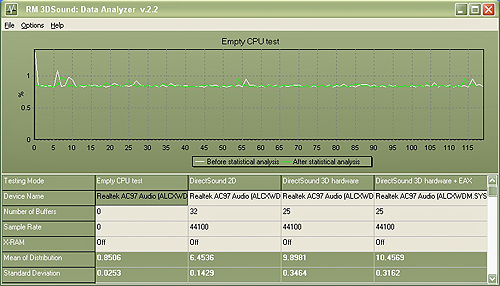
The Realtek ALC-850 was tested with the recently released 3.82 driver set. The Realtek audio drivers do not support more than 25 3D buffers at this time, so the scores cannot be directly compared to the HDA Mystique 7.1 and Creative Labs Sound Blaster X-FI cards in the benchmarks.

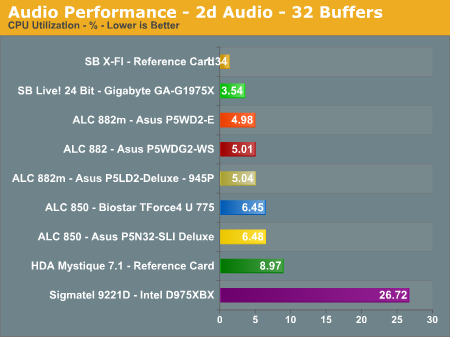
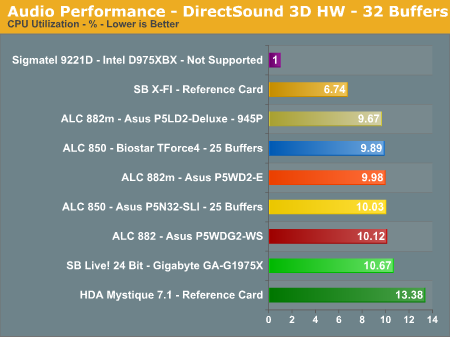
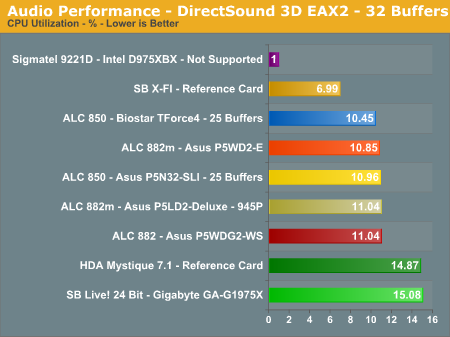
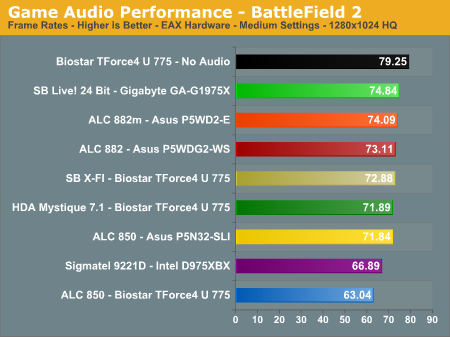
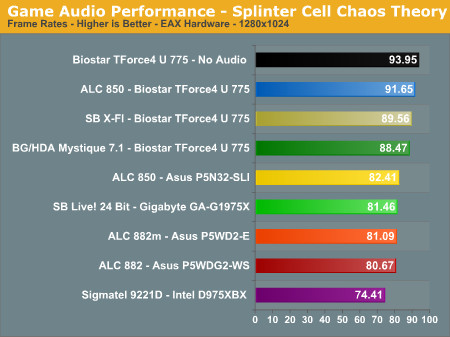
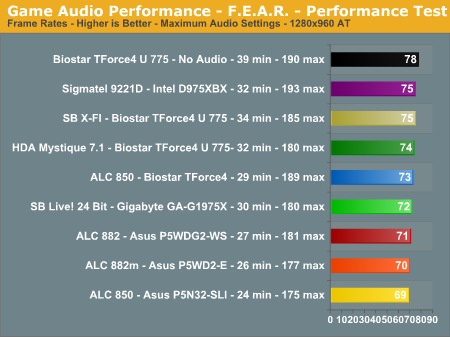
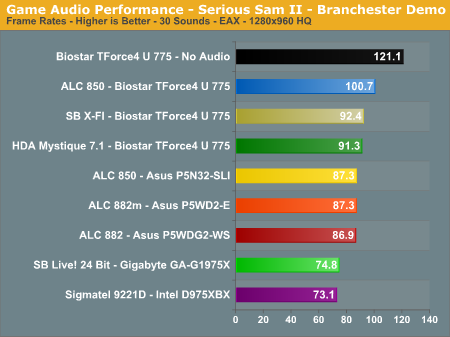
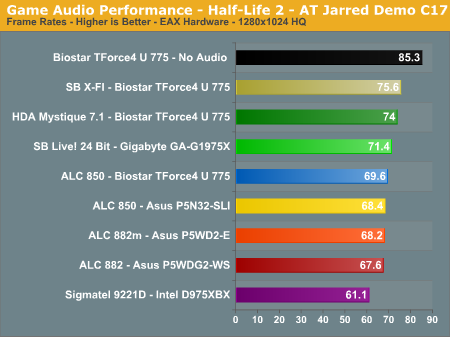
Obviously, if you are a serious gamer, then a dedicated sound card is still a requirement to ensure consistent frame rate averages across a wide variety of games. We noticed in previous testing of our Battlefield 2 and Half Life 2 benchmarks that the ALC-850 would stutter momentarily in intensive scenes. The 3.82 driver release has now eliminated stuttering in the BF2 and Half Life 2 benchmarks.










31 Comments
View All Comments
jamesbond007 - Thursday, February 16, 2006 - link
Haha! Way to go, Gary. You have a fan base! =PGary Key - Thursday, February 16, 2006 - link
Thanks for kind words everyone. I will post a short update to this article in a couple of days as the new bios results are looking promising in resolving some overclock and bios lockup issues.drewintheav - Thursday, February 16, 2006 - link
Gary is awesome! :)Zebo - Thursday, February 16, 2006 - link
I love Gary can't we get him writing articles people will read? Intel/biostar - common.. you'll get 1000 page hits max and 3/4 of them are because Gary wrote it!:PGooger - Thursday, February 16, 2006 - link
Not too bad if you want a P4, but for me I am avoiding nVIDIA Chipsets except when it comes to AMD products. Go Go ULi!DigitalFreak - Thursday, February 16, 2006 - link
Uh, you mean Go Go Nvidia, since they own ULi now...Googer - Thursday, February 16, 2006 - link
Finaly Intel Gets Hypertransport on their chips, like it or not HTT probably is becoming a standard that Intel might have to adopt sooner or later.DigitalFreak - Thursday, February 16, 2006 - link
This has nothing to do with Intel. Nvidia uses HT to communicate between their north and south bridges. They've done it with all their Intel chipsets so far.Googer - Thursday, February 16, 2006 - link
Since the noth bridge has HTT, in theory you could connect an nVIDIA based nFORCE north bridge to a ULi or nVIDIA AMD north bridge and have one of several things:1) A dual CPU system- One Intel Pentium M/4 and One AMD 64 CPU running on the same motherboard simultaniously. The OS might need to be re-written so that multi-threaded applications only use one processor. Linux prehaps?
2) AMD 64 Could get Quad Channel RAM higher.
3) You could ADD a ULi M1567 Southbridge to get True AGP with that PCI-express SLI.
4) You could possibly mix and match chipsets. VIA K8T8xx with one of AMD's north/south bridges and an nFORCE Intel Editon.
You could possibly Connect the AMD 64 Directly (using it's own HTT link) in to the the P4 north bridge with no need to use the chipset designed for the A64.
HTT on Intel means a whole new world of possibilites!
Furen - Thursday, February 16, 2006 - link
Huh? How is Intel getting hypertransport on its chips? HT is a standard but I dont think Intel will ever adopt it because of its pride, more than anything else. It truly doesn't matter though, since HT is just a data transport and using any other data transport gives you the same results as long as it is used in a similar configuration.